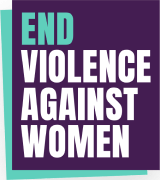Accessibility
Here is some information about what we have done to help make this site accessible.
Design standards
We aim to design to the Web Content Accessibility Guidelines 1.0. We also work to the BSI PAS 78:2006 guidelines where possible.
Structure of the site
We have one set of pages for the whole site, which we aim to make accessible to all. We do not separate accessible and less accessible pages into separate sections.
A link to a site map can be found at the footer of every page, which shows the organisation of the whole site.
Making the text larger
Your browser should allow you to zoom in to pages ensuring each element of the page is scaled proportionately. Shortcuts should be listed in the ‘View’ menu of the browser.
Software specifically designed for people with visual impairments should be compatible with this site and increase the text size.
Content
We aim to use clear, plain English in a concise and meaningful way.
Use of cookies
Every user is informed about how the site uses cookies on their first visit. For more information see our cookies policy.
Use of multimedia
We aim to label all images.
Text will be scaleable, as will all pages themselves. We set a maximum size for most pages, to ensure lines are wrapped according to commonly accepted typographical rules.
Browser support
There will always be small differences in the display between browsers, but we do aim to broadly support:
Newer versions of Internet Explorer for Windows
Safari
Mozilla Firefox
Google Chrome
Proof of compliance
Rather than using automated tools and badges, we aim to be responsive to your needs. Please let us know about any specific problems you encounter, or any suggestions you have for improvement by emailing admin@evaw.org.uk..
More information
Web Content Accessibility Guidelines 1.0 These guidelines explain how to make Web content accessible to people with disabilities. The guidelines are intended for all Web content developers (page authors and site designers) and for developers of authoring tools. The primary goal of these guidelines is to promote accessibility.
The BBC’s My Web My Way site provides accessibility help, enabling computer users to make the most of the internet whatever their ability or disability.
